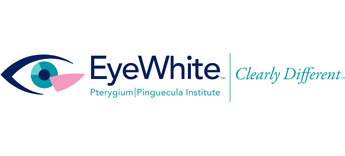What Causes Pterygium?
Although it can affect any person, a pterygium tends be more common in adults who spend long periods of time outdoors – in sandy or dusty areas and where there is significant exposure to sunlight and wind. For this reason, a pterygium is commonly referred to as ‘Surfer’s Eye,’ since many surfers suffer from this due to their prolonged exposure to UV rays without protection.
They are most common in people between the ages of 20 and 50 years and are more common in men. Also, Pterygia (plural for Pterygium) often occur in multiple members of families thereby indicating a genetic predisposition. People who live or are from tropical climates, occupations such as, landscapers and other outdoor workers, people who participate in sports such as soccer, sailors, surfers, golfers and skiers who are subjected to a lot of reflected UV light and populations living where there is ozone layer depletion, have a higher incidence. People who tend to suffer from dry eyes may also be more prone to developing a pterygium particularly if they spend a great deal of their time outdoors.
What are the Symptoms of Pterygium?
A pterygium is usually visible on the eye surface although sometimes it may not be noticeable. Smaller and less obvious lesions tend to appear like a little bump on the conjunctiva. However, larger lesions may be significantly raised up with a white to reddish appearance. Pterygia are often preceded by another mass known as a pinguecula, resembling a yellowish patch on the conjunctiva. Most pterygia occur on the part of the eye that closest to the nose. It may affect one eye only (unilateral) or both eyes simultaneously (bilateral). Although a pterygium is not considered to be a serious eye condition, it tends to cause significant discomfort in most cases. Patients tend to report the following symptoms:
- Burning, itching or tearing of the eye(s).
- A gritty feeling similar to ‘dirt in the eyes’.
- Foreign body sensation.
- Dry feeling.
- Visual disturbances with larger growths.
- Unsatisfactory cosmetic appearance – white of the eye.
Frequently Asked Questions
Is surgery the only option to treat Pterygium|Pinguecula?
- Surgery is the only option to remove a pterygium or pinguecula.
How do I know if I’m a candidate for Pterygium|Pinguecula removal surgery?
The best way to determine this is with a with a consult with Dr. Martinez or one of our clinical specialists.
- If you are pregnant or breast-feeding, it is best to hold off on your pterygium surgery until after.
- If you have active lupus, rheumatoid arthritis or other auto-immune disease, you should not undergo the procedure.
- If you are on blood thinners for stroke or atrial fibrillation you should not have the procedure
What is Dr. Martinez’s experience in Pterygium|Pinguecula removal surgery?
Dr. Martinez is one of the leading Pterygium surgeons in the world and has performed over 12,000 Pterygium removal procedures. Dr. Martinez has established the EyeWhite Institute and has conducted and published research on Pterygium and Pterygium surgery. He has developed and perfected the ASAP technique that offers a superior cosmetic outcome and one of the lowest recurrence rates in the world.
Is the surgery painful?
The procedure typically offers little to no pain. We use local and topical anesthesia via eye drops and also prescribe an oral medication to help you relax prior to the surgery. You may feel a bit of dryness, and feel a foreign body sensation which will improve over the first few days.
Where is the procedure performed?
We have a state-of-the-art in-office surgical suite, offering the latest in technology. As this is a private in office surgical suite, this can save you up to 60% off the price of having the surgery in a hospital or surgical center.
Does insurance cover the EyeWhite ASAP procedure?
Yes, and we participate with most insurance plans. We also offer a special self-pay rate for those who do not have insurance and in addition, we offer Care Credit as well. Our surgical counselor can provide you more information.
Will my eye be red after the EyeWhite ASAP procedure?
- It is normal to experience anywhere from up to 3 to 6 weeks of redness and mild irritation or light sensitivity following the procedure.
What are the risks of the EyeWhite ASAP procedure?
- While any surgery has risks, this surgery is very safe. There is a very small risk of infection after surgery, which is minimized with antibiotic eye drops used daily for up to six weeks following surgery. With Dr. Martinez’s procedure there is a very small chance of recurrence (one of the lowest in the world) about 0.6% that a pterygium would partially or fully grow back.
- There is a small chance (less than 1%) of having scarring from the surgery.
- In some patients, ocular pressure can increase from medications used after surgery. Eye pressures should be checked during the healing period so that this may be treated should it be needed.
When can I return to work?
Our surgeries are scheduled each week on a Thursday, and most of our patients return back to work on the following Monday. This varies among patients and the type of work they perform.
When can I drive after surgery?
At your next day post-surgical appointment, Dr. Martinez will remove your eye patch and if your vision is good the morning after surgery, you may drive that day.
Does insurance cover the EyeWhite ASAP procedure?
Click here for insurance and payment options.
Should you have any other questions, please contact our surgical counselor at (301) 896-0890 ext. 181, ext. or please email us at info@voeyedr.com.

